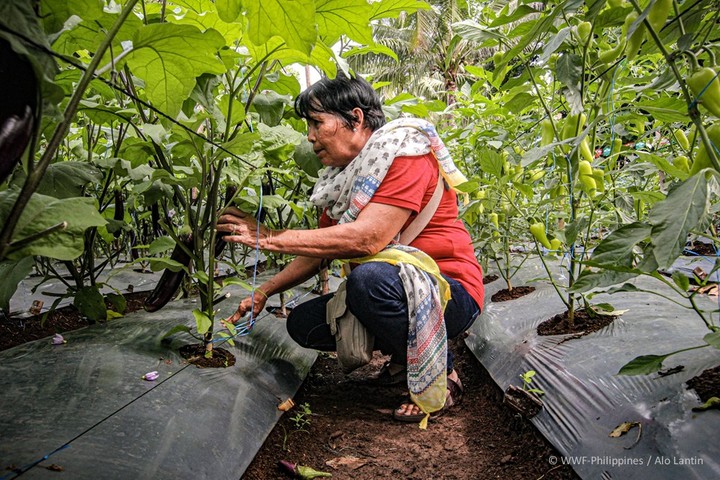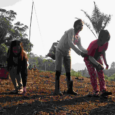Written by WWF-Philippines Sustainable Food Systems Program Manager Moncini Hinay; Edits made by Mikaela Zulueta
According to a Social Weather Stations survey, 4.2 million Filipinos experienced involuntary hunger under the current lockdowns, doubling hunger rates from the end of 2019. The pandemic is revealing cracks in our system that have always been there but now have upturned our way of life. Issues of food security have continued to deepen, particularly in urban areas such as the slums of Metro Manila. The United Nations states that we are now barrelling towards a global food emergency – but it isn’t too late for us to change that.
Before we can think up remedies to the food crisis, we must first understand what the problem is. One of the important pillars of food security is access to food. Various factors – geographical, societal, political – can keep whole communities from having access to good food. Under the current pandemic, these factors have been exacerbated. The poor have become poorer. The hungry have become hungrier. Those with little access to food, now face even greater rifts in accessibility.
Access to food is the source of much of our food security issues. The obvious solution would be to close the gap between communities and the food that they eat.

Photo Credit: WWF-Philippines / Alo Lantin
(Environment groups call on gov’t to phase out plastic sachets in 3 years)
The solution lies in communal gardening.
A communal garden is a small farm that is run and managed by a community for its own consumption and the consumption of its neighbors. These can be backyard gardens, or small farms in empty lots that are managed by nearby households. They need constant supervision and require working hands, but they’re easy to set up and to manage.
But what benefit can a communal garden provide?
Perhaps the most important concept behind communal gardening is the idea of democratic food production. The benefit of growing your own food is that you have the ability to decide what crops to eat, with minimized concern for prices at the market. You have control over your production. Your choice of fruits, vegetables, even chicken, fish, and other livestock, rests in your hands and not in the shelves at the local store or supermarket. You and your community can decide for themselves what to eat.
The second is a very simple idea: the closer you are to the source of your food, the more sure you are that you’ll get to eat it. A communal garden means literally having your food right next door, or in your backyard. With a well-managed garden, you can rest assured that nutritious food is a walk away, and maybe a bit of negotiation with your neighbors. This is a far cry over the hunger and uncertainty felt by many vulnerable communities.
A final, additional benefit to communal gardens is what it means for healthy community life. City life, for the most part, has separated us into individual and familial units, tearing down old community sensibilities in exchange for urban isolation. By working together towards the management of a communal garden, neighbors are made to work together to ensure food security for all. Together, a community pools resources, decides what produce to invest in, works out work schedules and roles and responsibilities. Jobs and livelihoods are created while food security increases and communities come closer together as they work toward their mutual benefit.
It’s important for us to bring farms into our cities and our communities, and doing so promises many benefits – but such a task will require much work on a local level. What can be done to ensure that every city and every barangay has its own green spaces with which the people can grow their own food?
Firstly, there needs to be some sort of buy-in to get such green spaces up and running. In our experience, we’ve found that introducing community gardens from an enterprise perspective is particularly effective. By providing the initial seeds and capital, an institution or organization can set the groundwork for a fully-functioning communal garden. The promise of further spending power through earnings from the garden can spur townships to continue managing the space.
Those first few green spaces should then serve as a case study for the rest of the community. The communal garden should showcase highly replicable, low-tech, cost-efficient production technologies, to prove to the community that its management wouldn’t be much of a challenge.
Finally, these community gardens should be built with accessibility in mind. Everyone has the capacity to farm. By designing these communal gardens to be accessible to women, the elderly, youth groups, and PWDs, we can create further employment and increase productivity, while highlighting inspirational figures who could champion the cause of communal gardening.
Through the assistance of an initial buy-in, through effective management and replicable, people-intensive technologies, and with accessibility taken into consideration, each communal garden that is built can serve as its own argument for the feasibility of a democratic food system.
Through communal gardening, we are not only providing solutions for the coming food crisis but also transforming the very fabric of our community lives. We bring our own sources of food right into our own backyards, for us to grow and manage together with our neighbors, our friends, our families. With others.
Creating a communal garden is the single biggest political act a community can do because it challenges a broken global food system and unlocks the potential of our interpersonal lives.
The COVID-19 pandemic has shown to us our broken food system has not fully addressed the gaps that keep us from achieving food security for all. Distances physical, social, and financial keep many from the food that they need to lead nutritious lives. But if we were to take production into our own hands and work together within our communities to build democratic solutions to our nutritional challenges, we may be able to provide safe food for all.
The solution to the food crisis is in our own hands.
What do you think about this?
Do you have a story for the WhenInManila.com Team? Email us at story.wheninmanila@gmail.com or send us a direct message at WhenInManila.com Facebook Page. Interact with the team and join the WhenInManila.com Community at WIM Squad! Join our Viber group to be updated with the latest news!




